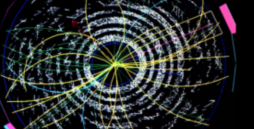Speaker
Tanaz Angelina Mohayai
(Illinois Institute of Technology)
Description
The international Muon Ionization Cooling Experiment (MICE) is a high energy physics experiment located at Rutherford Appleton Laboratory in U.K. The aim of MICE is to demonstrate muon beam cooling for the first time. The process of reducing beam phase-space volume is known as beam cooling and this process is necessary for a beam of muons because of the large phase-space volume that they occupy upon production. Cooled muon beams are essential for future muon-based facilities such as neutrino factory or muon collider. Several beam cooling techniques exist, but the ionization cooling is the only technique fast enough for muons within their short lifetime. In MICE, commonly used figures of merit for cooling are the beam emittance reduction, the phase-space volume reduction, and the phase-space density increase. Given the precision with which MICE aims to demonstrate beam cooling, it is necessary to work around any beam effects which may lead to inaccurate cooling measurements. Non-linear effects in beam optics is an example of such effects which can result in beam heating. The Density Estimation, DE techniques are analysis tools which are insensitive to these non-linear effects and measure the muon beam phase-space density and volume. This talk will give an overview of the recent MICE results and the novel application of the DE techniques, in specific the kernel density estimation, KDE technique in MICE.
Primary author
Tanaz Angelina Mohayai
(Illinois Institute of Technology)
